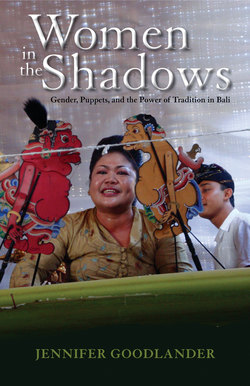Читать книгу Women in the Shadows - Jennifer Goodlander - Страница 10
На сайте Литреса книга снята с продажи.
ОглавлениеNote on Language and Terms
Research and writing about wayang kulit in Bali requires the use and study of several languages: Indonesian, Balinese, and Kawi. Spelling for these languages is not consistent among sources. In this book I use the Tuttle Concise Indonesian Dictionary (revised in 2006) and the Tuttle Concise Balinese Dictionary (2009) as my primary sources for those languages. Most of my research was conducted in Indonesian, and unless otherwise indicated all foreign terms are in Indonesian. For Kawi, I rely on the spellings and punctuation given to me by my sources in Bali. I am grateful to I Nyoman Sedana for his assistance with the Kawi and often providing translations.
When quoting another source I retain that source’s spelling and capitalization, but otherwise I follow the practices advocated by the Association for Asian Performance, in which words for artistic genres, such as wayang kulit, should not be capitalized in the same way that their Western equivalents, such as ballet, would not be capitalized.
Wayang kulit has a specialized vocabulary that is difficult to replicate in English; therefore a few non-English terms such as wayang kulit or dalang will be used throughout this book. In Indonesian and Balinese, singular and plural noun forms are nearly always identical (e.g., anak, child, children). If a plural needs to be made clear, the word is spoken twice (e.g., anak-anak, children). Such plurals are awkward in English, so I often rely on context to indicate whether a word is singular or plural (e.g., “five women dalang”). When introducing a term for the first time, I include an explanation in the text. I have also included a glossary of non-English terms.
